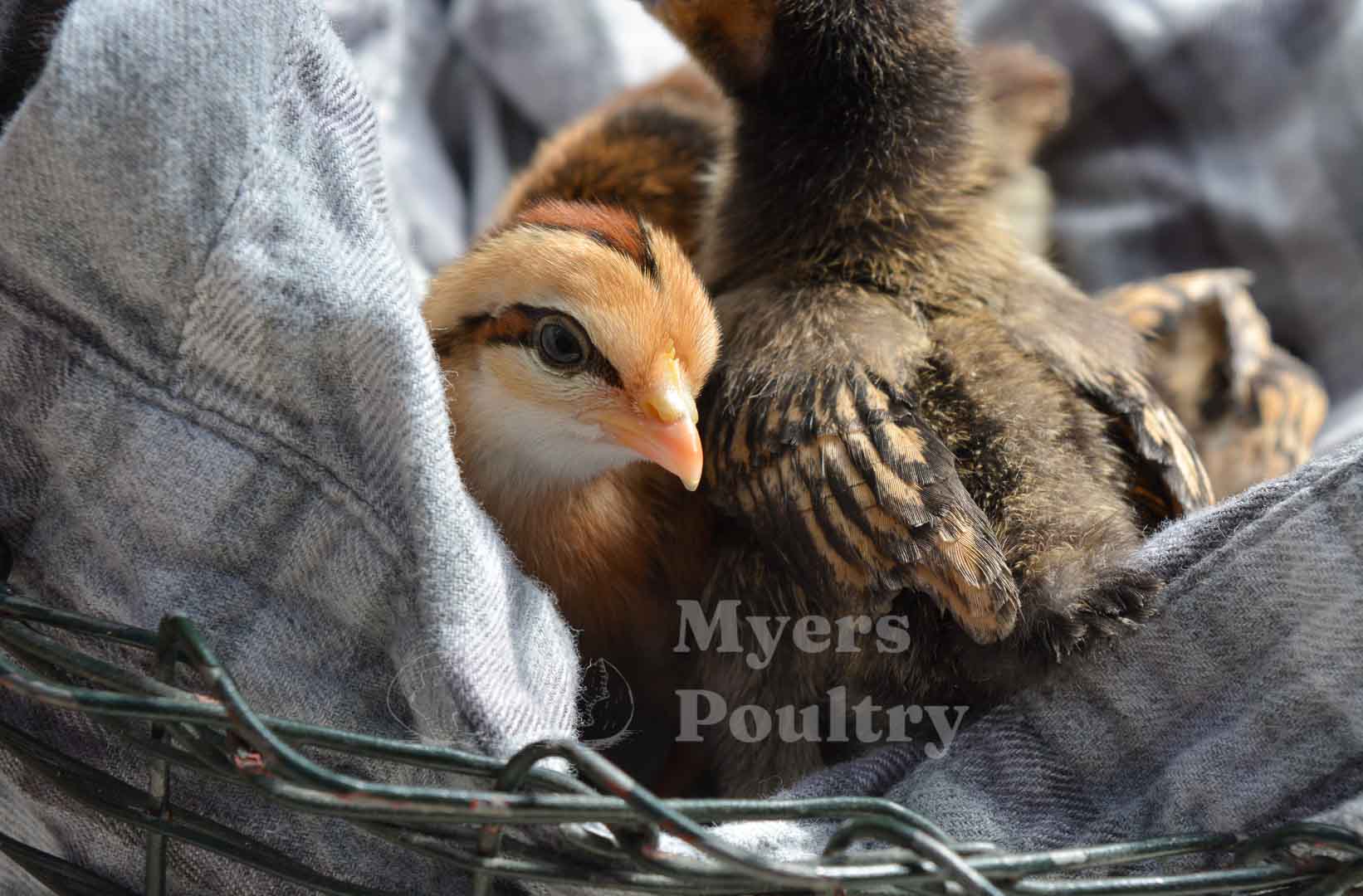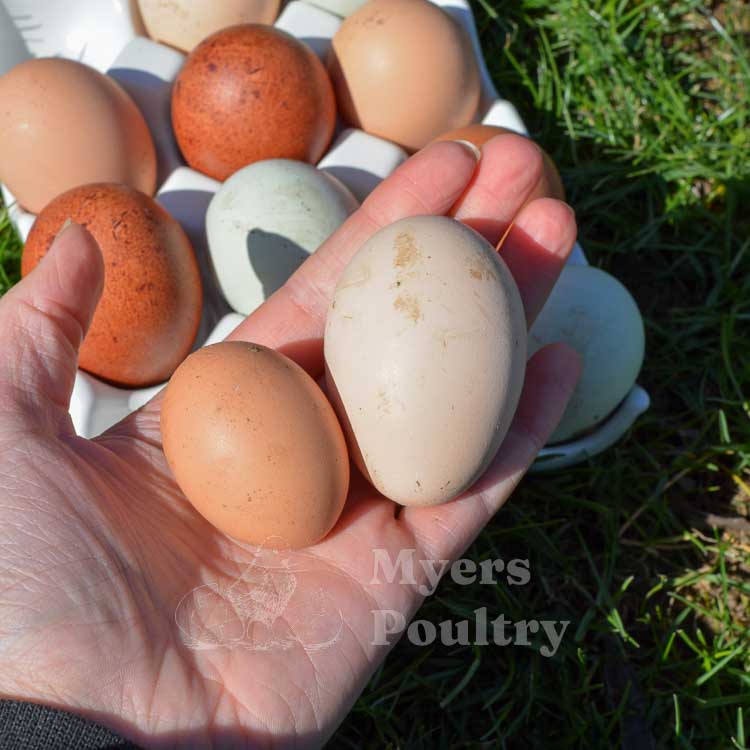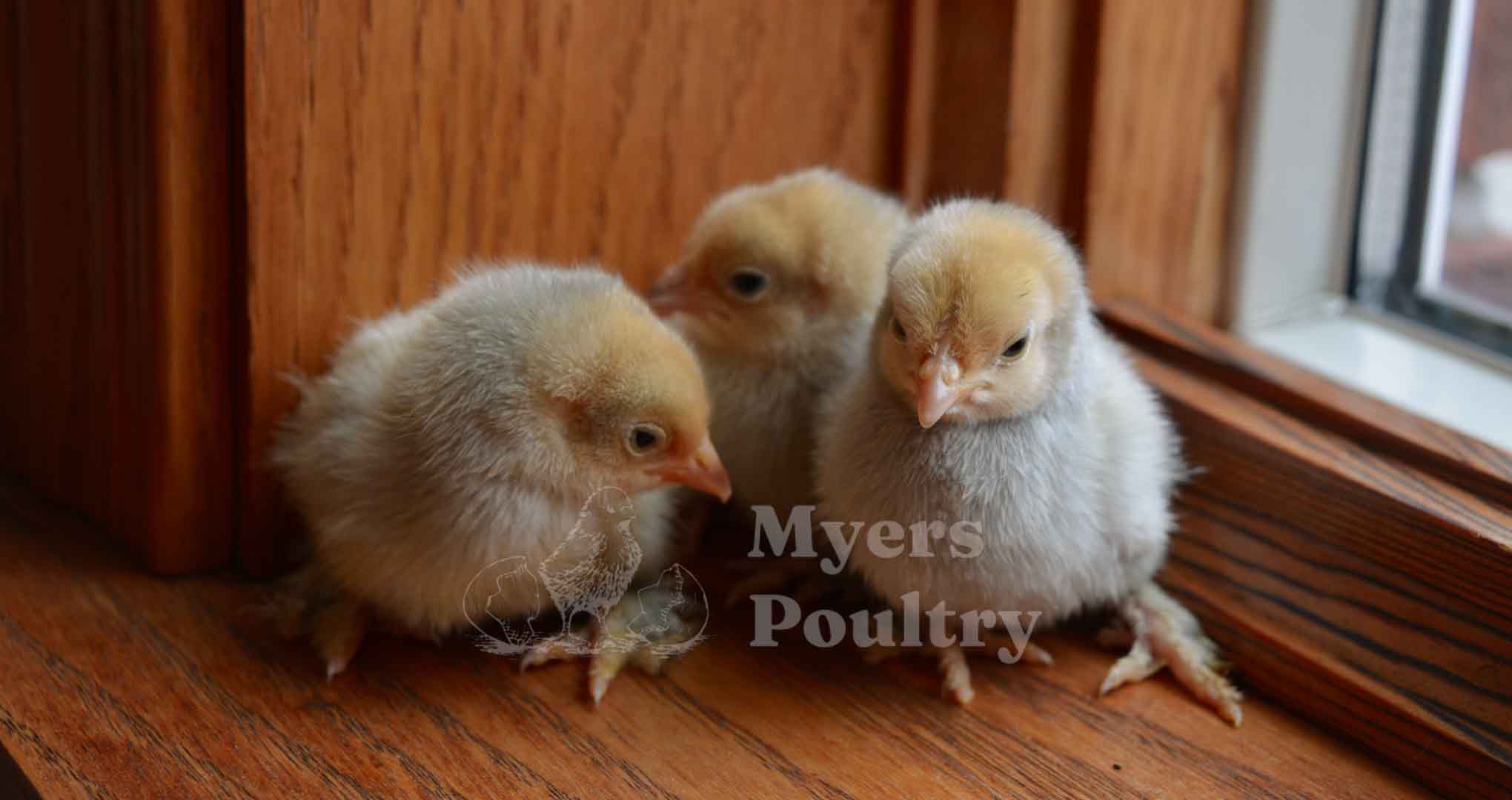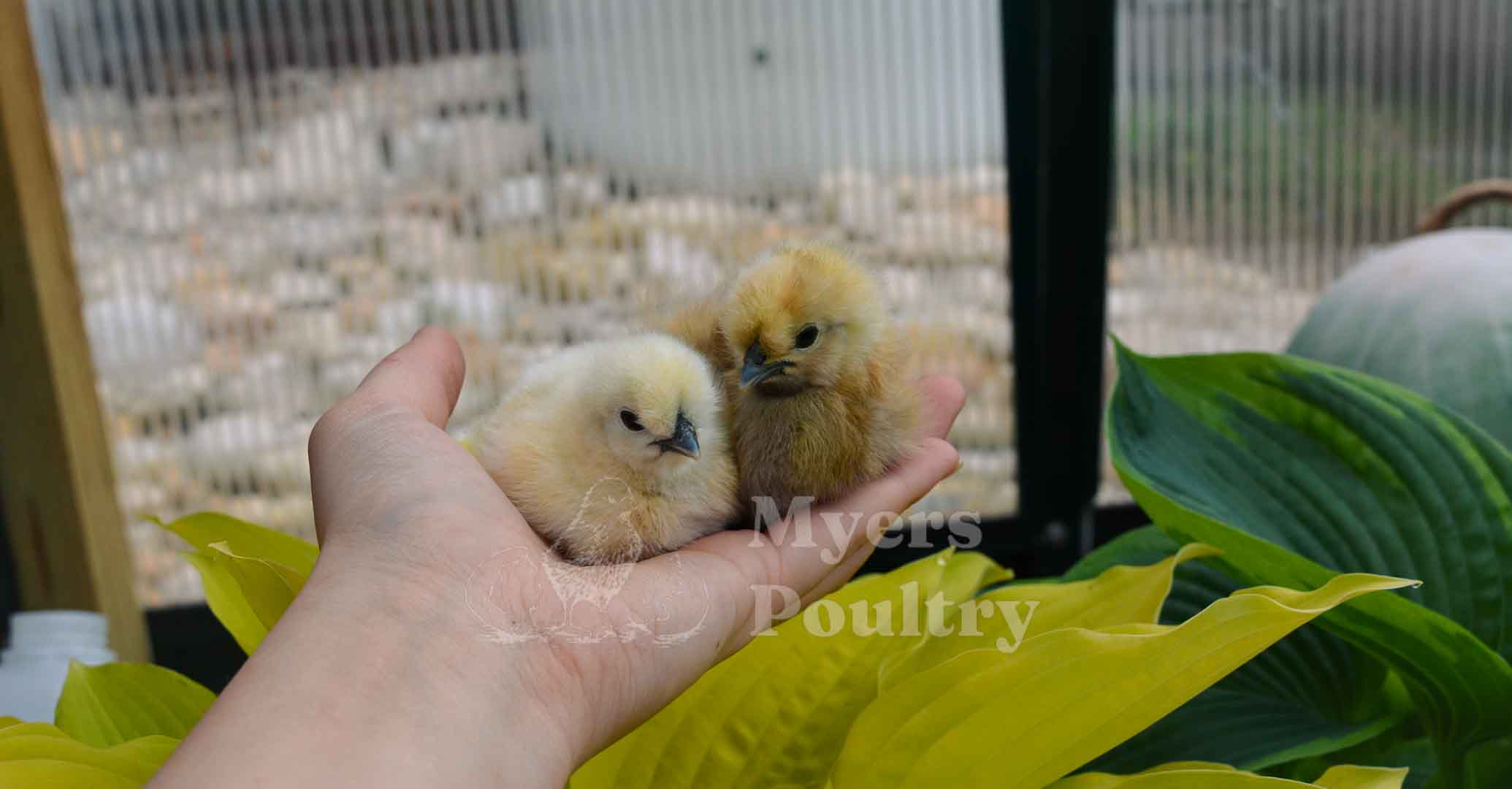Blog
All About Bantams: The Benefits of Mini Chickens
April 28, 2025
Mini Chickens with Plenty to Offer
Have you ever heard of a “mini” chicken? That's likely a reference to bantams, a small, colorful variety of chicken. While smaller in size, these birds are lively and full of character.
So, why bother keeping mini chickens in your flock? Are there any benefits to raising a smaller variety of poultry as opposed to standard size breeds?

While they certainly have their benefits, they are not the right fit for everyone. Before you add bantams to your flock, consider your goals and aspirations with keeping backyard poultry.
While they certainly have their benefits, they are not the right fit for everyone. Before you add bantams to your flock, consider your goals and aspirations with keeping backyard poultry.
We’ll cover some of the history behind these miniature chickens, as well as the pros and cons of keeping them in your flock.
What Are Bantam Chickens?
Bantams are not a single breed, but rather an umbrella term for a variety of small chicken breeds. They are about a quarter of the size of a standard chicken and typically take longer to reach laying maturity than a standard layer.
There are two types of bantams out there:
- True bantams: There is no larger counterpart to their breed.
- Miniature bantams: They are small, selectively bred versions of standard breeds.
White Silkies and Sebrights are examples of true bantams, as there is no full-size version of these breeds. A popular miniature bantam is Cochins, which come in a small or standard size.
A “Mini” History Lesson on Bantams
Bantams have a rich and fascinating history that stretches back hundreds of years. This breed got their start in Southeast Asia, as well as parts of China and Japan.
Artists and writers of this time period frequently depicted bantams in their work because of their timeless beauty.
In particular, Japanese Bantams appear in paintings dating as far back as the 1600s.
In particular, Japanese Bantams appear in paintings dating as far back as the 1600s.
Over time, and with some cross-continental traveling, their charm spread across the world. Today, bantams are beloved by poultry enthusiasts and backyard growers around the world for the same reasons they were centuries ago: they’re small, beautiful, and friendly.
Yes, bantam hens do lay eggs. But if your goal with your backyard flock is to produce a large amount of jumbo eggs, then you may be disappointed.
Bantam chicken eggs are about half the size of a standard chicken egg, so you’ll need to use at least two bantam eggs when baking or cooking to keep your ratios accurate.

As we mentioned earlier, it can take them longer to reach laying maturity, so you have to be a bit more patient. Until your hens get the hang of laying eggs, the first couple of eggs might be small and misshapen. It will take a few cycles before your bantam eggs come out at their true size.
Like standard layers, bantam egg colors come in all shades and colors of the rainbow. Depending on the breed, you may get white, cream, tan, brown, green, or light blue. You can learn more about the genetics behind chicken egg colors from our recent Myers Poultry blog.
While they aren’t exactly renowned for high production, bantam eggs often have a higher yolk-to-white ratio than standard eggs, making them incredibly rich in relation to their size. Many growers prefer to use them for pickling or boiling, as they are great for a high protein snack.
Unlike cold hardy breeds like Wyandottes, Barred Rocks, and Rhode Island Reds, you’re unlikely to see a bantam breed frolicking in the snow.

In general, most breeds of bantam chickens are not quite as resilient as standard breeds. We do not recommend bantams for extreme climates, as they are unlikely to thrive.
Because of their size and feather type, they can be more susceptible to frostbite, especially in harsh winters or drafts. Feather footed bantams are especially vulnerable, as snow can accumulate and freeze on their feet.
Bantams are also prone to heat stress if exposed to high humidity without adequate airflow. They are not the best at regulating their body temperature.
However, many bantam breeds will thrive in moderate climates. Silkies will tolerate cold reasonably well if kept dry and draft-free throughout the winter season.
With proper shelter and optimal care, bantams can thrive in most backyards. To keep them healthy and happy year-round, ensure your coop build has adequate insulation as well as good ventilation. You can reference our blog on preparing your coop for winter weather to learn more.

If you are looking for a beautiful, friendly bird to add to your backyard, you really can't go wrong with most bantams. Some of our most popular bantam breeds include:
For total beginners with small backyards, bantams are a great variety of poultry to start with. If you’re looking for something fun, ornamental, or simply want to enjoy the joy of small chickens, bantams are a great choice.
At Myers Poultry, we offer a wide variety of bantam chicken breeds. Our assorted bantams will help you add a touch of beauty to your flock at a discounted price. You can contact our friendly team if you need help deciding which breeds are right for you.
Caring for Bantam Chickens
Caring for bantam chickens is much like caring for standard-size chickens, but there are a few additional considerations when you add them to your flock.
- Space: Once they’re fully feathered, bantams can live outside in a coop like standard chickens. You can even keep them in a mixed flock with larger birds, but introductions should be done gradually through a fence. The pecking order isn’t always kind to smaller birds.
- Coop supplies: Bantams prefer roosting bars that are thinner, as their small stature can make a normal roosting bar more difficult to latch onto. They are also excellent fliers and very agile, so placing some of the roosting bars higher is ideal.
- Security: Because bantams are small and light (typically no more than 2 lbs), they’re more vulnerable to predators. If you plan to free range your flock in an area densely populated with hawks, foxes, or other wildlife, bantams may not be the best fit for you.
- Fencing: Bantams can squeeze through smaller gaps than standard chickens, so it’s essential to secure your coop and run, as well as your backyard. Taking this extra precaution will also be an essential step in protecting them from predators.
- Feed and bedding: Bantams eat less food and create less waste than standard chickens, which can be a significant reduction in cost and labor. However, because of their small size, it’s important to use feeders and waterers they can access comfortably.
Do Bantams Lay Eggs?
Yes, bantam hens do lay eggs. But if your goal with your backyard flock is to produce a large amount of jumbo eggs, then you may be disappointed.Bantam chicken eggs are about half the size of a standard chicken egg, so you’ll need to use at least two bantam eggs when baking or cooking to keep your ratios accurate.
As we mentioned earlier, it can take them longer to reach laying maturity, so you have to be a bit more patient. Until your hens get the hang of laying eggs, the first couple of eggs might be small and misshapen. It will take a few cycles before your bantam eggs come out at their true size.
Like standard layers, bantam egg colors come in all shades and colors of the rainbow. Depending on the breed, you may get white, cream, tan, brown, green, or light blue. You can learn more about the genetics behind chicken egg colors from our recent Myers Poultry blog.
While they aren’t exactly renowned for high production, bantam eggs often have a higher yolk-to-white ratio than standard eggs, making them incredibly rich in relation to their size. Many growers prefer to use them for pickling or boiling, as they are great for a high protein snack.
Are Bantams Hardy?
Unlike cold hardy breeds like Wyandottes, Barred Rocks, and Rhode Island Reds, you’re unlikely to see a bantam breed frolicking in the snow.In general, most breeds of bantam chickens are not quite as resilient as standard breeds. We do not recommend bantams for extreme climates, as they are unlikely to thrive.
Because of their size and feather type, they can be more susceptible to frostbite, especially in harsh winters or drafts. Feather footed bantams are especially vulnerable, as snow can accumulate and freeze on their feet.
Bantams are also prone to heat stress if exposed to high humidity without adequate airflow. They are not the best at regulating their body temperature.
However, many bantam breeds will thrive in moderate climates. Silkies will tolerate cold reasonably well if kept dry and draft-free throughout the winter season.
With proper shelter and optimal care, bantams can thrive in most backyards. To keep them healthy and happy year-round, ensure your coop build has adequate insulation as well as good ventilation. You can reference our blog on preparing your coop for winter weather to learn more.
Our Favorite Bantam Breeds
If you are looking for a beautiful, friendly bird to add to your backyard, you really can't go wrong with most bantams. Some of our most popular bantam breeds include:
- Silkies. They are known for their fluffy, hair-like feathers and docile personalities. They have a truly unique look, with black skin and 5 toes. Bantam hens are generally great mothers, but Silkies tend to top the list.
- Sebrights. This variety is a true bantam with a distinct lace feather pattern. This breed comes in a gold or silver variety, with Silver Sebright bantams being a popular breed at Myers Poultry.
- D’Uccles. These bearded, feather footed bantams have a great reputation among the show circuit. Our Mille Fleur D'Uccle is a popular option for growers that need a good show bird.
So, if Bantams sound interesting to you and you’re still curious as to whether they’re a good fit, we invite you to consider the following.
Bantams are a great fit for you if:
- You want chickens for pets or companionship. Bantams are known for being friendly and docile, and their smaller size is ideal for young kids.
- You don’t need high egg production. You’ll get fewer and smaller eggs, but bantam chicken eggs do have excellent flavor. They will still add to your egg basket, just in a smaller package.
- You have a small backyard or live in an area with restrictions. Some zones place a limit on coop size or number of birds. Bantams are ideal for city living or tight spaces with neighbors close by.
- You want an exhibition bird. These birds have enduring popularity among the show circuit, so you can’t go wrong with bantams. Every breed is unique and has something beautiful to offer.
- You want to save money. These birds eat less and create less waste, so they don't require as much labor or coop maintenance as standard breeds.
Bantams may not be right for you if:
- You live in an extreme climate. Bantams will not thrive in excessively cold or hot areas, and they will require constant management to ensure they are healthy and happy.
- You don’t want to deal with broody hens. Bantams are notorious for going broody, especially Silkies. If you’re not up for broodiness, steer clear of bantam breeds.
- You need sexed birds. Due to their small size at hatch, bantams are only sold as straight run from Myers Poultry. It is not possible to guarantee their sex from day-old.
- You don’t have time for grooming or maintenance. Some bantams require regular feather trims to see properly and maintain proper hygiene, so they need to be handled more often.
- Your area is densely populated with predators. Their small size makes them far more vulnerable than standard birds, and not ideal for free ranging.
Add Beautiful Bantams to Your Flock with Myers Poultry
For total beginners with small backyards, bantams are a great variety of poultry to start with. If you’re looking for something fun, ornamental, or simply want to enjoy the joy of small chickens, bantams are a great choice.At Myers Poultry, we offer a wide variety of bantam chicken breeds. Our assorted bantams will help you add a touch of beauty to your flock at a discounted price. You can contact our friendly team if you need help deciding which breeds are right for you.